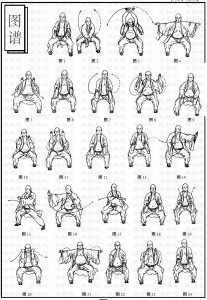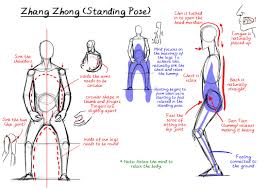Top 9 Exercises for Musicians
A musician is much like an athlete as he or she must be fit in order to perform well. While general physical activity and exercise is good for just about everyone, musicians require a different kind of exercise and conditioning to stay in performance-ready shape. Performance-ready shape is as much about being healthy and injury free as it is about building the stamina and endurance needed to give your best every time. The most used and abused part of a musician's body are generally the hands. That's why every music teacher will tell you that performing a series of finger exercises along with hand and arm stretches is an important practice before picking up your instrument to play. Of course, as with any exercise regimen, you must consult your physician first.
Below are some of the best resources for beginning and advanced musicians to help strengthen and care for the hands, throat, and back to keep the whole body healthy and injury free.
Top 9 Exercises for Musicians Resources
- Hand Care for Musicians: Many life-long musicians find that they sustain chronic injuries to the muscles and tendons they use the most. While some injuries develop simply due to over-use, others can be prevented with better posture and instrument handling, certain exercises and stretches, along with an increased awareness of when tension is putting you at risk. This comprehensive article was written by a musician who suffers from chronic tendonitis. It details his injury and ongoing recovery with stories, photos, and instructions on specific exercises that helped him along the
- Digi-Flex Finger and Hand Exercises: This article, written by About.com’s physical therapy expert and reviewed by a board-certified physician details 6 awesome exercises for a musician’s hands and fingers that uses a Digi-Flex, an inexpensive device designed specifically for exercising the hands. The exercises are meant to improve your range of motion and overall strength for full, healthy function in your hand(s).
- Guitarists and Health: This article maintains that the best way to treat injury is through prevention. The article focuses on overall health of the musician, but also prevention of repetitive strain injuries, which are common among musicians. While some of these exercises, tips, and resources are geared toward guitarists’ unique risk factors, much of the content is simply good advice for any musician.
- Alexander Technique for Musicians: The Alexander Technique holds that we are most often unaware of the habits that cause our bodies stress. Geared toward musicians who are experiencing strain (or those who want to avoid it) and improve coordination, this method has been recognized as a remarkably effective technique of mine-body re-education.
- Breathing Exercises for Wind Instrumentalists: This downloadable exercise guide is a comprehensive resource particularly for wind instrument players. The guide steps you through a series of breathing exercises from preparatory to advanced exercise that are meant to give the musician proper mastery of breathing and breath control in order to aid in tone quality, sustaining tones, intonation, volume, and flexibility.
- Musician's Health: This Musician’s Health article outlines a series of stretching exercise from the book Repetitive Strain Injuries: Alternative Treatments and Prevention. Helpful photos accompany each stretching exercise for easy instruction. These daily exercises benefit the hands, fingers, and arms.
- Repetitive Stress and Strain Injuries: Preventive Exercises for the Musician: This scientific study, conducted and written by Dr. Gail Shafer-Crane of Michigan State University, concludes that it is imperative for musicians to learn to recognize early signs of repetitive stress and strain injuries (RSI) in order to limit damage to muscular and neural tissues.
- Exercise for Musicians (play fit not flat): In this brief article, physiotherapist Dr. Bronwen Ackermann outlines the importance of exercise for the musician and provides recommendations for effective exercise that includes the entire body. Ackermann also focuses on exercises that strengthen the core for overall musician health.
- Qi Gong Exercises for Musicians: This resource is a brief video focusing on the power of Qi Gong, a type of Chinese spiritual practice intended to align the body, breath, and mind. The video is specifically geared towards the unique needs of the musician and offers techniques to improve posture and breathing.




:max_bytes(150000):strip_icc():format(webp)/GettyImages-548312721-56a68eae5f9b58b7d0e38a07.jpg)
:max_bytes(150000):strip_icc():format(webp)/left_rail_image_music-58a22da168a0972917bfb5c0.png)






 The purpose of these standing exercises is to become aware of the body and how it stabilizes itself. You are then able to gain a measure of control over this autonomic process and use it to improve health, posture, and martial abilities. Still too esoteric? Let’s break it down a bit. Normally your stabilizer muscles keep you from falling down. However, this relies on balancing with minute, continual adjustments against gravity. Secondly, the same muscles that stabilizes you also constrict your blood flow. By aligning your posture you are asking you major muscles and your bones to take your bodies weight. This allows the blood to rush freely while you concentrate on your breath and mental presence.
The purpose of these standing exercises is to become aware of the body and how it stabilizes itself. You are then able to gain a measure of control over this autonomic process and use it to improve health, posture, and martial abilities. Still too esoteric? Let’s break it down a bit. Normally your stabilizer muscles keep you from falling down. However, this relies on balancing with minute, continual adjustments against gravity. Secondly, the same muscles that stabilizes you also constrict your blood flow. By aligning your posture you are asking you major muscles and your bones to take your bodies weight. This allows the blood to rush freely while you concentrate on your breath and mental presence. Those unfamiliar with
Those unfamiliar with 
 Please note that
Please note that  Here is a great cartoon drawing of Zhan Zhuang that is easy to follow:
Here is a great cartoon drawing of Zhan Zhuang that is easy to follow:
I am a student of Yang long form traditional style.
I would be delighted to receive your newsletter etc
If you haven’t done so already, subscribe in the upper right corner of the screen and you will be notified when a post is released. We don’t spam and they come out about once a month. Welcome to the conversation.
I will respond and do my best to translate but I haven’t spoken Portuguese for a while. Please put this message in google translate. I believe you shared that you have injuries to your cervical and lumbar areas of your back. Yes Zhan Zhuang can help but there are some important things to keep in mind. I will share a bit here. Know that I am not a doctor so I am suggesting further reading for you. People HAVE healed their back or reduced their cronic pain.
You Are the Placebo is the book (http://www.youaretheplacebo.com/)
Here is a piece in Portuguese: https://www.youtube.com/watch?v=_-qk6yUjkdQ
8 steps to a pain free back by esther gokhale
Vou responder e fazer o meu melhor para traduzir mas eu não falei Português por um tempo. Por favor, coloque esta mensagem Traduz Google. Eu acredito que você compartilhou que você tem lesões nas áreas cervical e lombar das costas. Sim, Zhan Zhuang pode ajudar, mas há algumas coisas importantes a ter em mente. Eu vou compartilhar um pouco aqui. Saiba que eu não sou um médico assim que eu estou sugerindo ainda a leitura para você. As pessoas têm curado suas costas ou reduziram sua dor crônica.
Você é o Placebo é o livro (http://www.youaretheplacebo.com/)
Aqui é uma peça em Português: https://www.youtube.com/watch?v=_-qk6yUjkdQ
8 passos para uma livre da dor traseira por Esther Gokhale
Height: Maintain a high enough posture so that you don’t compromise your injury. You can accomplish what you need to in a near erect posture with soft joints.
Time: Stand for a bit longer than you currently are. Discomfort will often direct your body into a better posture to alleviate leaning or other bad joint relationships.
Zhan Zhuang has many goals and postural differences. Not to mislead you and to give you further reading I am included a couple great resources. This from “The Search for Wu”
There are eight basic standing posts. From the First form up to the Fifth form, all are Basic Healing posts; from the Sixth form to the
Eighth form, all are Basic combat posts. These eight posts are the most commonly used in Zhan Zhuang are arranged according to the ascending order of physical strain required.
The illustrations along with the writing above show continually lower and more contorted postures as you progress through the eight.
The Zhan Zhuang system begins with two basic standing exercises. These start to build up and release the natural flow of energy inside you. The first position, a simple standing posture, enables you to relax your body in preparation for the other exercises. The second position, “Holding the Balloon”, is the key position in the whole system.
yourself as never before, you will not be left gasping grotesquely for air. You will be able to exercise without fighting against yourself.
Yours in health, s
My question for Sprath is what would be the goal of doing higher and longer stances vs lower stances. I assume the lower stance is for martial practice.
Low stances
Health
The lower stance has numerous implications for health. It: raises body temperature, increases bloodflow, can be used to train the breath to be lengthened, innervates the bone marrow in the large bones specifically the femur (bone marrow contains the bodies growth and repair centers – stem cells), and helps us self-diagnose poor posture. On the metaphysical side, the lower stance is described as separating heavy/dark and light qi and moving “stale” qi down while bringing fresh qi in through the top of the head.
Low standing for 3 minutes each day has to be the quickest way to build up leg strength, confidence in stance work, and flexibility. Any stance work should be accompanied by standing meditation. I don’t know how one would learn how to empty-step while maintaining their root without experiencing the heavy sensation that deep standing provides.
Health
The higher stance allows us a lot of time to cultivate internal sensitivity, meditate, and work on long periods of relaxation. Arts that are heavy into standing such as I Chuan (Yi Quan) work up to 60-90 minutes of standing. It would not be beneficial to try to do that in the lower stance. Qi gong sets that build up chi and use chi cannot be done in the lower stance. You can’t concentrate and maintain the stance for the amount of time it takes the internal energy to build up or for a novice to develop.
The higher stance can be used to cultivate awareness of opponents and some of the harder qi gongs and gong fu harden their skin in higher standing postures.
Nerve /MS pain read Brain Maker
Read anything you can on sleep and check out The Model Health Show podcasts. There is a series of shows from the first half of 2016 all on sleep.